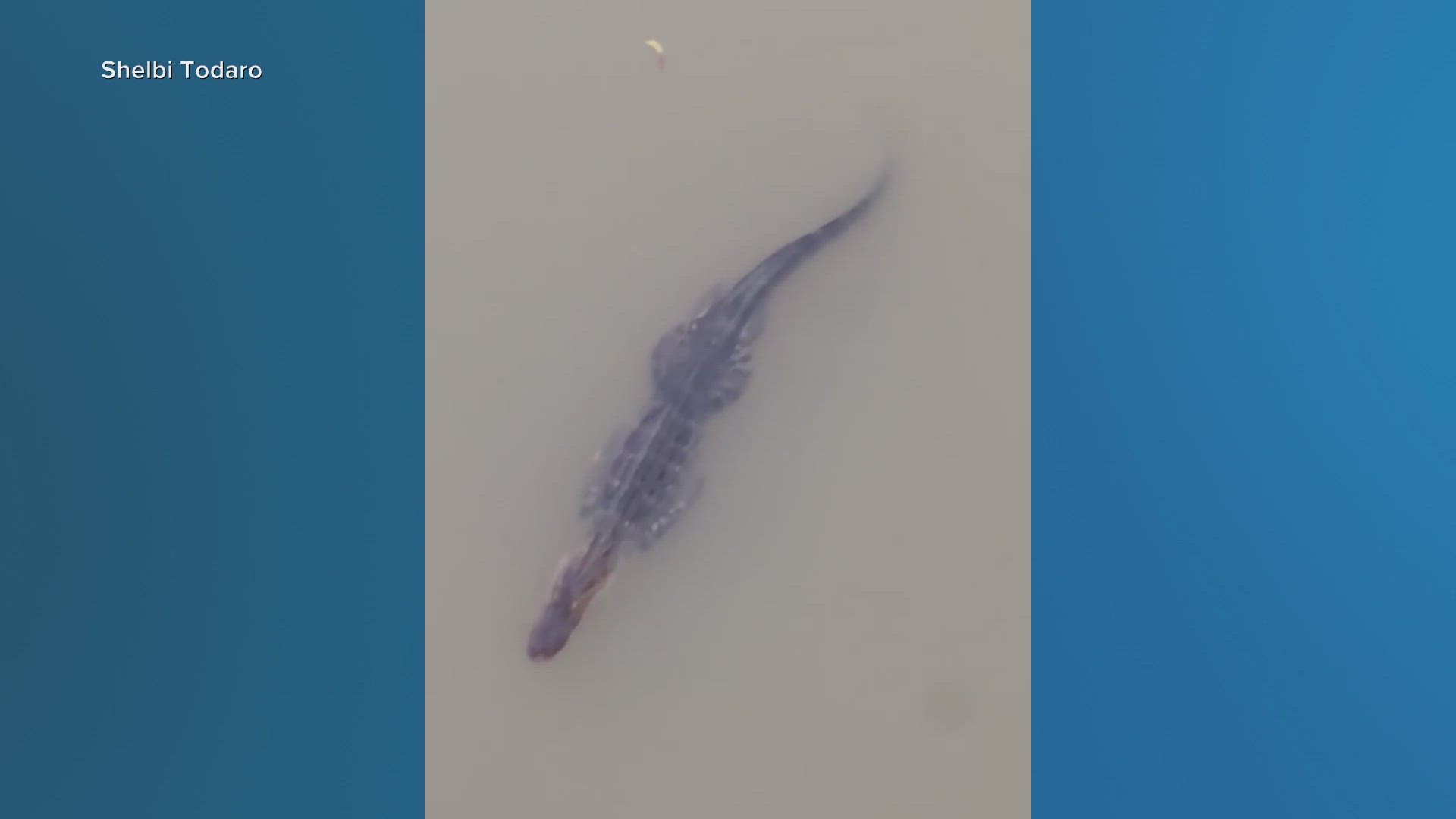WACO, Texas — It's not every day you'll see an alligator in Waco unless you’re a daily visitor to the Cameron Park Zoo. Typically, alligators won’t make their home in the Brazos River, so when someone spots one, it’s bound to get a lot of attention.
A recent Facebook post by Shelbi Todaro quickly went viral after sharing videos of an alligator swimming in the Brazos River near the Waco Suspension Bridge.
Jonathan Warner, Alligator Program Leader at the Texas Parks and Wildlife Department, says the department has been tracking alligator sightings in Waco. He believes the alligator recently spotted by Todaro is the same three-foot alligator reported in late September on the river banks at Brazos Park East.
Warner says it’s likely this alligator was an illegally owned pet released into the river or an escapee. Warner says some people may think it’s a good idea to have an alligator in the bathtub, but underestimate how big the reptiles can get.
“Across the southern United States, when we see alligators that are pets that are dumped, it's normally because the owner didn't anticipate them growing as quickly as they did or don't have space to, unfortunately, home them anymore,” Warner explained.
Male adult alligators can grow up to 14 and a half feet, while female alligators top off around 10 feet.
If you are lucky enough to catch a glimpse of the Waco Alligator, it’s best to keep your distance. While alligators are known to be shy, docile animals, they can be dangerous when they get comfortable around humans.
“It's a public safety issue or it's a safety issue for the alligator, once they lose their fear and their apprehension of people," Warner said. "Unfortunately, it's usually from interaction with the public with alligators in unsafe ways, like feeding them or harassing them or shooting at them.”
Waco won’t be saying “See ya later, alligator” anytime soon. At this point, the Texas Parks and Wildlife Department does not plan on removing the alligator. Kayakers and paddlers should act with caution and not approach wildlife. Once an alligator starts approaching people in the water, it’s a clear sign the alligator is being fed by people and that’s when it becomes a threat.
“It's not a public safety threat right now unless we make it one. Enjoy the sighting, take videos, but this is not 'Lake Placid',” Warner said, referencing the 1999 Horror Comedy film about a crocodile beast terrorizing residents, “This thing is not cruising the shoreline looking to eat people's dogs.”
It’s not easy to remove alligators either. Warner says alligators have a strong homing instinct and will try to make their way back home. But don’t take that as a challenge, it’s illegal to capture or kill alligators without the correct permits.
Warner also suggested that sightings of the Waco Alligator will become few and far between as we enter winter months and colder temperatures.
There could be up to half a million alligators in Texas, but most of them can be found in the southern, eastern and southeast parts of the state. The Waco region is on the edge of the historical habitat for alligators, but there’s not a population of alligators residing in Waco.
However, that’s not to say it’s not impossible to have alligators in Central Texas. (Clearly, as we’ve seen alligators not only in the Brazos River but also in Stillhouse Hollow Lake earlier this year.) Alligators can still naturally migrate to the area.
Ultimately, the best advice is "Don't feed the alligator."
More animal stories from 6 News:

